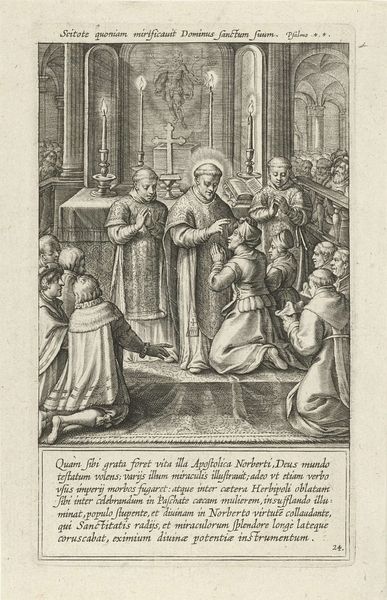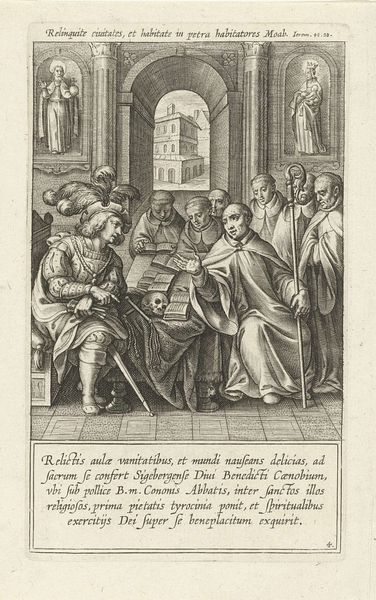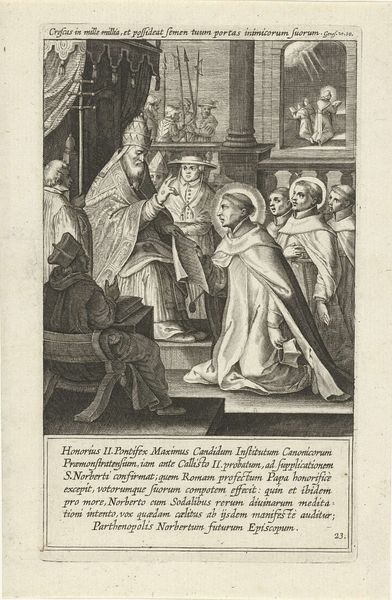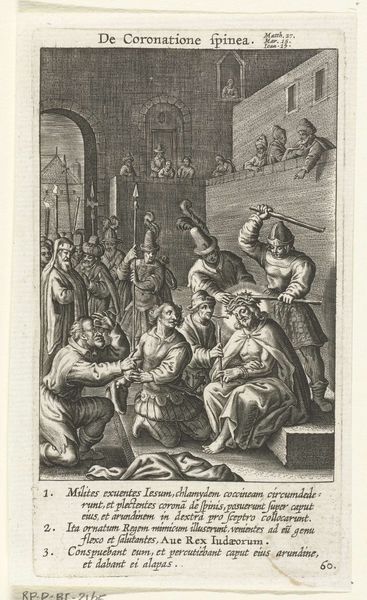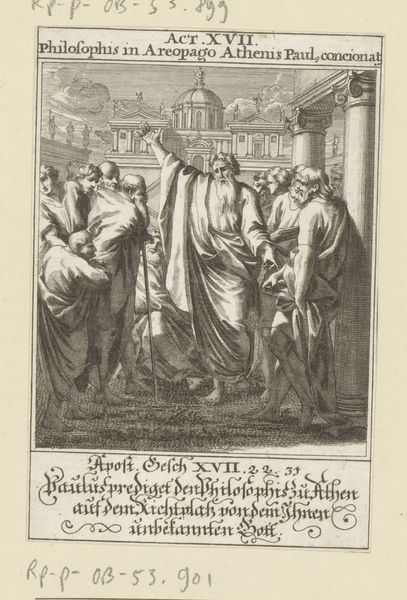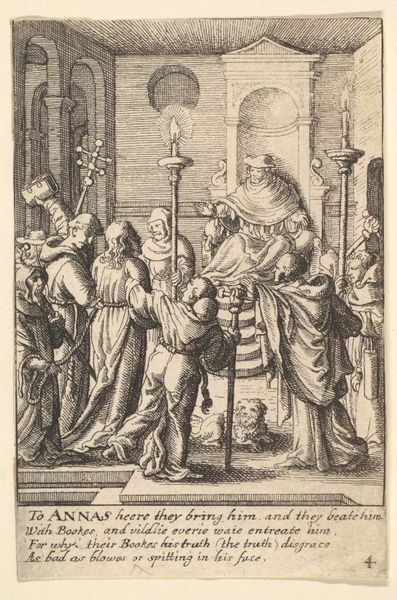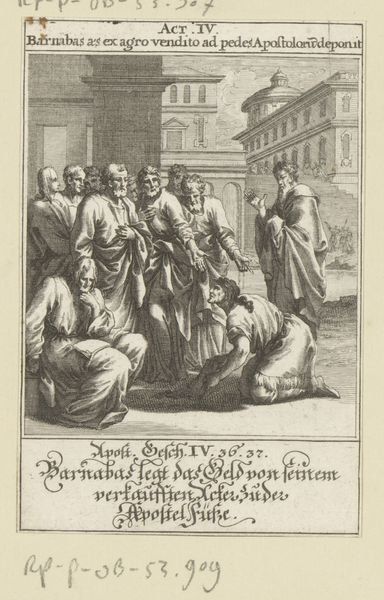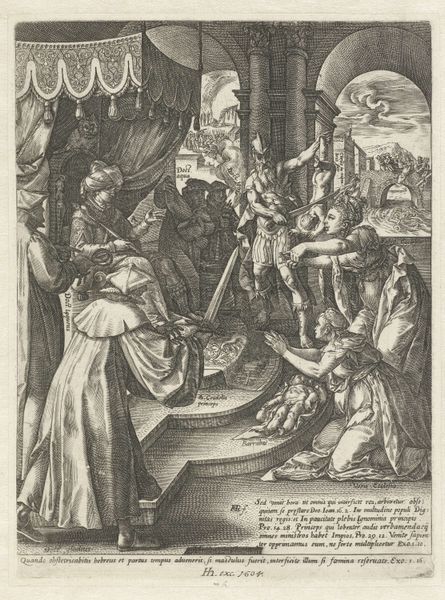
De heilige Norbertus verdedigt zich tegenover de Katholieke kerk 1622
0:00
0:00
print, engraving
#
portrait
#
baroque
# print
#
old engraving style
#
figuration
#
line
#
history-painting
#
northern-renaissance
#
engraving
Dimensions: height 152 mm, width 93 mm
Copyright: Rijks Museum: Open Domain
Curator: Alright, let's dive into this intriguing piece. Here we have "De heilige Norbertus verdedigt zich tegenover de Katholieke kerk," or "Saint Norbert Defends Himself Before the Catholic Church," an engraving from 1622 by Cornelis Galle I. It’s part of the Rijksmuseum collection. Editor: Immediately, I'm struck by the sheer density of figures and lines! It feels so…contained. The whole scene seems poised and dramatic, ready to erupt. All eyes are focused on the speaker in the middle of this tightly organized room. Curator: The print captures a moment of intense scrutiny. Norbert, a relatively plain figure adorned with a halo and unassuming clothing, stands before an assembly of clergy, with what appears to be a ray of divine light beaming down. We can appreciate, here, Galle's engraving prowess in the varied textures that brings an almost photorealistic dimension to the scene. Editor: What’s fascinating to me is how this work speaks to the historical context of the Reformation and Counter-Reformation. We are witnessing power dynamics in play: Saint Norbert, standing up to ecclesiastical authority, embodies a struggle for theological and institutional reform. Who controls what narrative, and by what authority? This picture poses those questions! Curator: Absolutely. You feel the weight of the institution through those stern faces of the cardinals sitting for judgement in their canopied stalls. Each tiny stroke contributes to an oppressive atmosphere. There’s an inherent drama captured in the composition—a lone figure challenging the status quo. Editor: I imagine audiences back then saw something quite controversial in this. Highlighting an individual standing against the collective, and in favor of divine grace rather than adherence to tradition must have ignited something, perhaps an unsettling thought. How far can you question structures and how do you represent those power struggles in Art? This piece offers plenty to reflect on, centuries later. Curator: Indeed. Looking closely reminds us that images were powerful tools, deployed within religious and political landscapes to advocate and persuade. Galle gives us an incredibly detailed slice of that history. Editor: Ultimately, whether as a devotional print or a political statement, its careful details still ignite conversations and questions about authority, belief, and representation. Food for thought, literally etched in time.
Comments
No comments
Be the first to comment and join the conversation on the ultimate creative platform.


